Related Research Articles
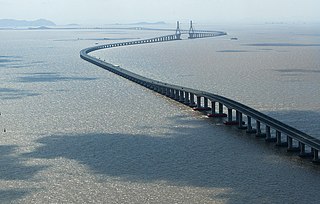
Transport in China has experienced major growth and expansion in recent years. Although China's transport system comprises a vast network of transport nodes across its huge territory, the nodes tend to concentrate in the more economically developed coastal areas and inland cities along major rivers. The physical state and comprehensiveness of China's transport infrastructure tend to vary widely by geography. While remote, rural areas still largely depend on non-mechanized means of transport, a modern maglev system was built in China to connect the city center of Shanghai with Shanghai Pudong International Airport. Airports, roads, and railway construction will provide a massive employment boost in China over the next decade.

Transport in the United Kingdom is facilitated with road, air, rail, and water networks. A radial road network totals 29,145 miles (46,904 km) of main roads, 2,173 miles (3,497 km) of motorways and 213,750 miles (344,000 km) of paved roads. The National Rail network of 10,072 route miles (16,116 km) in Great Britain and 189 route miles in Northern Ireland carries over 18,000 passenger and 1,000 freight trains daily. Urban rail networks exist in Belfast, Birmingham, Cardiff, Edinburgh, Glasgow, Liverpool, London, Manchester and Newcastle. There are many regional and international airports, with Heathrow Airport in London being one of the top ten busiest in the world. The UK also has a network of ports which received over 486 million tons of goods in 2019. Transport is the largest source of greenhouse gas emissions by the United Kingdom.

Network Rail Limited is the owner and infrastructure manager of most of the railway network in Great Britain. Network Rail is an "arm's length" public body of the Department for Transport with no shareholders, which reinvests its income in the railways.

Rail transport in India is an important mode of conveyance for people and goods in India. Indian Railways (IR) is the primary operator of rail operations throughout the country. IR is a state-owned organisation of the Ministry of Railways, which historically had its own government budget. Between 2019 and 2020, 22.15 million passengers used the Indian Railways network daily. In the same period, 3.32 million metric tons of freight was also shipped daily on the IR network.

The Mumbai Metro is a rapid transit (MRT) system serving the city of Mumbai and the wider Mumbai Metropolitan Region in Maharashtra, India. Mumbai Metropolitan Region Development Authority is the responsible authority for maintaining the metro system. Maha Metro is responsible for all the metro rail projects undergoing in Maharashtra except the Mumbai Metropolitan Area. The system is designed to reduce traffic congestion in the city, and supplement the overcrowded Mumbai Suburban Railway network. It is being built in three phases over a 15-year period, with overall completion expected in October 2026. Mumbai Metro is the sixth longest operational metro network in India with operational length of 46.4 km (28.8 mi) as of January 2023. When completed, the core system will comprise fourteen high-capacity metro railway lines and one metrolite line, spanning a total of 356.972 kilometres (221.812 mi), and serviced by 286 stations.

Navi Mumbai is a planned city situated on the west coast of the Indian subcontinent, located in the Konkan division of Maharashtra state, on the mainland of India. Navi Mumbai is part of the Mumbai Metropolitan Region (MMR). The city is divided into two, North Navi Mumbai and South Navi Mumbai, for the individual development of Panvel Mega City, which includes the area from Kharghar to Uran, including the Taloja node. The Agri and Koli Communities mainly reside in Navi Mumbai. Navi Mumbai was the host city for the inaugural final of the IPL (2008) at DY Patil Stadium. Thane Belapur Marg and Palm Beach Marg are major business attraction and upmarket residential areas respectively. Navi Mumbai has a population of 1,119,477 as per the 2011 provisional census. It has an average city elevation of 14 meters, excluding forest area.
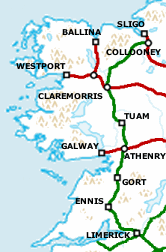
The Western Railway Corridor is a term, used since c. 2003, for a partly disused railway line running through the west of Ireland. Currently two sections of the line, from Limerick via Ennis to Athenry and from Collooney to Sligo, see regular services, with other sections either closed or only technically classed as open.

England has a dense and modern transportation infrastructure. The Department for Transport is the government department responsible for the English transport network. Transport in England is facilitated with road, air, rail, and water networks. A radial road network totals 29,145 miles (46,904 km) of main roads, 2,173 miles (3,497 km) of motorways and 213,750 miles (344,000 km) of paved roads.

Delhi has significant reliance on its transport infrastructure. The city has developed a highly efficient public transport system with the introduction of the Delhi Metro, which is undergoing a rapid modernization and expansion since 2006. There are 16.6 million registered vehicles in the city as of 30 June 2014, which is the highest in the world among all cities, most of which do not follow any pollution emission norm, while the Delhi metropolitan region has 11.2 million vehicles. Delhi and NCR lose nearly 42 crore man-hours every month while commuting between home and office through public transport, due to the traffic congestion. Therefore, serious efforts, including a number of transport infrastructure projects, are under way to encourage usage of public transport in the city.
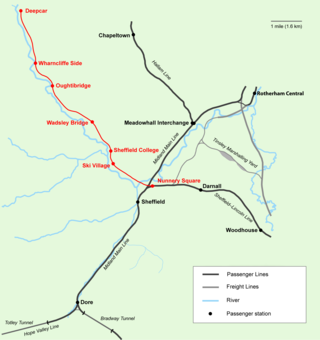
Don Valley Railway first formed as a heritage rail project in September 2003 to operate on the freight rail line between Stocksbridge Steel Works and Sheffield following the route of the former Woodhead Line between Deepcar and Sheffield, The project is developed by Don Valley Railway Ltd., a not-for-profit company and registered charity based in Stocksbridge, South Yorkshire. Original plans to operate heritage rail services for the dual purpose of providing infrastructure for tourism over the weekends, alongside regular commuter services have now shifted towards concentrating on the development of a viable commuter service - though with help of outside assistance heritage plans could be revised.

Although Finland has no dedicated high-speed rail lines, sections of its rail network are capable of running speeds of 200 km/h (120 mph). The Finnish national railway company VR operates tilting Alstom Pendolino trains. The trains reach their maximum speed of 220 km/h in regular operation on a 75.7 km (47.0 mi) route between Kerava and Lahti. This portion of track was opened in 2006. The trains can run at 200 km/h (120 mph) on a longer route between Helsinki and Seinäjoki and peak at that speed between Helsinki and Turku. The main railway line between Helsinki and Oulu has been upgraded between Seinäjoki and Oulu to allow for trains to run at speeds between 160 km/h (99 mph) and 200 km/h (120 mph). Other parts of the Finnish railway network are limited to lower speed.
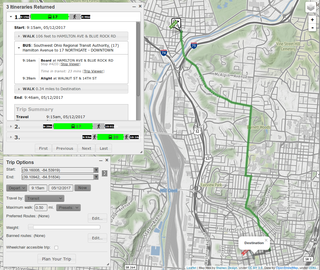
A journey planner, trip planner, or route planner is a specialized search engine used to find an optimal means of travelling between two or more given locations, sometimes using more than one transport mode. Searches may be optimized on different criteria, for example fastest, shortest, fewest changes, cheapest. They may be constrained, for example, to leave or arrive at a certain time, to avoid certain waypoints, etc. A single journey may use a sequence of several modes of transport, meaning the system may know about public transport services as well as transport networks for private transportation. Trip planning or journey planning is sometimes distinguished from route planning, which is typically thought of as using private modes of transportation such as cycling, driving, or walking, normally using a single mode at a time. Trip or journey planning, in contrast, would make use of at least one public transport mode which operates according to published schedules; given that public transport services only depart at specific times, an algorithm must therefore not only find a path to a destination, but seek to optimize it so as to minimize the waiting time incurred for each leg. In European Standards such as Transmodel, trip planning is used specifically to describe the planning of a route for a passenger, to avoid confusion with the completely separate process of planning the operational journeys to be made by public transport vehicles on which such trips are made.
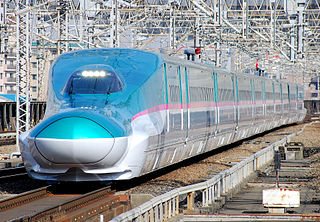
Indian Railways does not have any operational high speed rail lines, however, a total of twelve corridors are proposed, with the corridor between Mumbai and Ahmedabad under construction. As of 2022, the highest operational speeds are on the Gatimaan Express with some sections achieving 160 km/h (99 mph), while the fastest train is the Vande Bharat Express with a design top speed of 180 km/h (110 mph),

Urban rail transit in India plays an important role in intracity transportation in the major cities which are highly populated. It consists of rapid transit, suburban rail, monorail and tram systems. According to a report published in 2021, a total of 2.63 billion people travelled annually in metro systems across India's fifteen major cities, placing the country as one of the busiest urban rapid transit hubs in the world in terms of ridership. The combined length of 822.038 kilometres of metro systems in India makes it the fourth longest in operation in the world.

The National Capital Region Transport Corporation (NCRTC) is a joint venture company of the Government of India and the states of Haryana, Rajasthan, Uttar Pradesh, and Delhi. The NCRTC is mandated with implementing the Regional Rapid Transit System (RRTS) project across the National Capital Region (NCR), ensuring a balanced and sustainable urban development through better connectivity and access.
In transport terminology, network length refers to the total length of a transport network, and commonly also refers to the length of any fixed infrastructure associated with the network.

Northern Powerhouse Rail (NPR), sometimes referred to unofficially as High Speed 3, is a proposed major rail programme designed to substantially enhance the economic potential of the North of England. The phrase was adopted in 2014 for a project featuring new and significantly upgraded railway lines in the region. The aim is to transform rail services between the major towns and cities, requiring the region's single biggest transport investment since the Industrial Revolution. The original scheme would have seen a new high-speed rail line from Liverpool to Warrington continuing to join the HS2 tunnel which it would share into Manchester Piccadilly station. From there, the line would have continued to Leeds with a stop at Bradford. The line was intended to improve journey times and frequency between major Northern cities as well as creating more capacity for local service on lines that express services would have been moved out from.
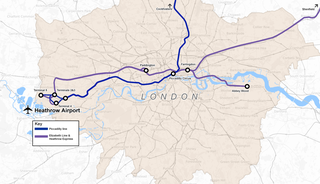
Over the years, a number of transport proposals have been made to improve public access to Heathrow Airport, near London in the United Kingdom.
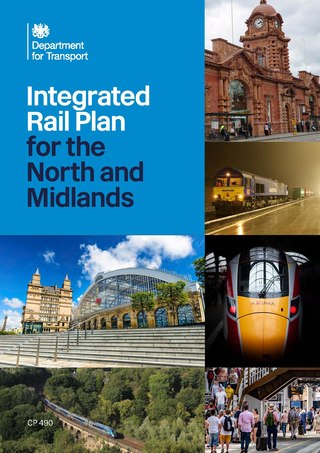
The Integrated Rail Plan for the North and Midlands or more simply, the Integrated Rail Plan (IRP), is a United Kingdom government proposal published on 18 November 2021. It aims to deliver "increased capacity, faster journeys or more frequent services on eight out of the top ten busiest rail corridors across the North and Midlands", by developing rail services along with the required infrastructure in these regions of England. It was published by the Department for Transport (DfT) and features forewords by Prime Minister Boris Johnson and Transport Secretary Grant Shapps, but its publication was delayed a number of times, partly because of the COVID-19 pandemic. It contains the significant proviso that "In line with the Government's existing approach to rail enhancements, commitments will be made only to progress individual schemes up to the next stage of development, subject to a review of their readiness." A Technical Annexe was published in January 2022. A correction slip was issued March 2022.

East West Rail is a major project to establish a strategic railway connecting East Anglia with Central, Southern and Western England. In particular, it plans to build a line linking Oxford and Cambridge via Bicester, Milton Keynes and Bedford, largely using the trackbed of the former Varsity Line. Thus it provides a route between any or all of the Great Western, Chiltern, West Coast, Midland, East Coast, West Anglia, Great Eastern and the Cotswold main lines, avoiding London. The new line will provide a route for potential new services between Southampton Central and Ipswich or Norwich via Reading, Didcot and Ely, using existing onward lines. The government-approved the western section in November 2011, with completion of this section expected by 2025. As of January 2019, the company aims to complete the central section by "the mid 2020s". As of March 2020, electrification of the line is not planned, but the 2019 decision is under review. The plan is divided into three sections:
References
- ↑ Malavasi, Gabriele; Molková, Tatiana; Ricci, Stefano; Rotoli, Francesco (2014-08-01). "A synthetic approach to the evaluation of the carrying capacity of complex railway nodes" . Journal of Rail Transport Planning & Management. 4 (1): 28–42. doi: 10.1016/j.jrtpm.2014.06.001 . ISSN 2210-9706 – via ScienceDirect.
- ↑ "Warsaw Railway Node". AECOM. Retrieved 2021-10-25.
- ↑ Rodrigue, Jean-Paul. "The Geography of Transport Systems". Hofstra University, Department of Global Studies & Geography. Retrieved 2021-10-25.
- ↑ "Kaunas railway node engineering infrastructure development plan will be prepared". www.railbaltica.org. 2020-09-11. Retrieved 2021-10-25.